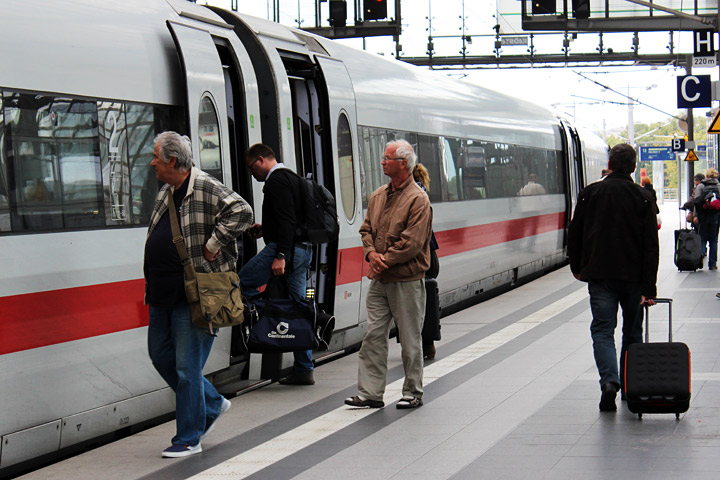I love train travel. And Germany has some great trains, or züge (pronounced “zoog”).

I wrote this from the seat of an Inter-City Express train from Cologne to Berlin. These sleek, white machines are the flagship trains of Deutsche Bahn, the German rail company – reaching speeds of up to 300 km/h as they hurtle between cities.
On board it’s quiet, the seats are comfortable (no need to buy first-class tickets) and on Inter-City Express trains there is often a restaurant car selling mediocre food and decent coffee and beer.
(That said, it was a bit of a harrowing trip back to my seat at 150 km/hour with a cappuccino in my hand.)
For a nominal fee you can reserve a seat, which is handy on a busy train if you don’t want to sit in the aisle. It’s a bit of a gamble: On this trip, I wasted about 4.50 euros ($6.50 CDN) reserving a window seat on a train that’s only half-full.
You can also reserve a small compartment, which seems to be a popular choice for families with young children.
I booked this particular ticket using the Deutsche Bahn app. I searched the schedule, picked a train, paid and downloaded the ticket all on my cell phone. Then I just showed my phone and a piece of ID to a ticket collector on the train.
There are a number of ways to prove your identity. As a non-German, I simply produced the credit card I used to book the ticket, and which is now connected to my online profile. I carry my passport just in case, though I have yet to be asked for it.
But the biggest difference between Deutsche Bahn and VIA Rail is the number of destinations you can reach by train.
The German passenger train network is pretty amazing. I have seen towns of a few hundred people with a train station and hourly service. According to Deutsche Bahn’s 2013 annual report, every day in Germany an average of 6.1 million people take over 25,000 daily trains.
Obviously it isn’t fair to compare German railways to Canada’s. Germany has a much bigger population in a much smaller space, meaning that the density is there to support an extensive rail network. The longest direct high speed route probably takes around seven or eight hours. Compare that to VIA’s Canadian, which goes from Toronto to Vancouver in four days.
Still, I haven’t yet had a Deutsche Bahn train delayed because we were behind a freight train, which happens often on VIA. According to Deutsche Bahn, while passenger and freight services share tracks in Germany, freight trains mostly drive during the night, when there are fewer passenger trains. Dispatchers decide which service has priority on a case-by-case basis.
Canada’s VIA Rail wins when it comes to wifi though. While many Deutsche Bahn trains have on-board wifi, it isn’t free.
Germans love their trains, too. I visited a transportation museum in Dresden that had a whole exhibit dedicated to the first small train line in the area. And you see all ages and types of people on the train, from well-dressed businesswomen to scuzzy backpackers.
But are the trains a model of German efficiency, arriving precisely at the appointed time? I have to report that no, not really. In my experience, they are often 5-15 minutes late (though Deutsche Bahn reports a 95.6% punctuality rate in their most recent service report).
Forgivable, certainly, but annoying if you miss the connection to your next destination.
Leslie Young is in Germany as part of the Arthur F. Burns fellowship program. Follow her musings and adventures here.





Comments